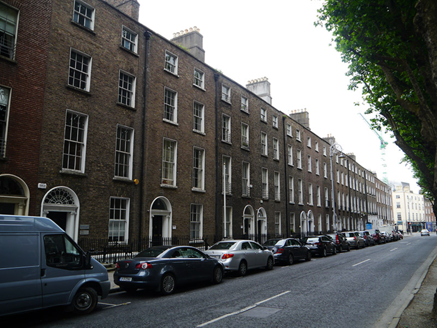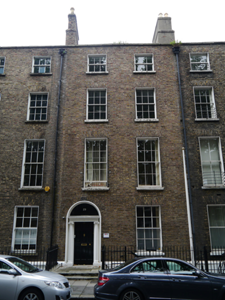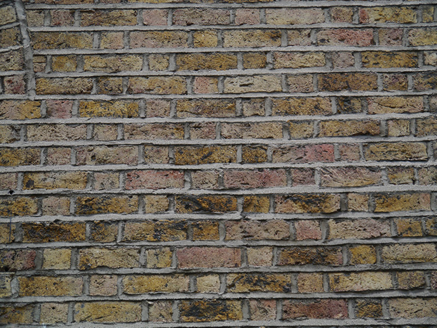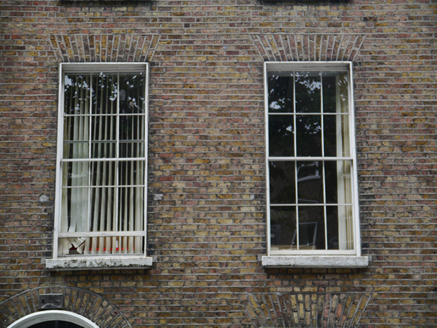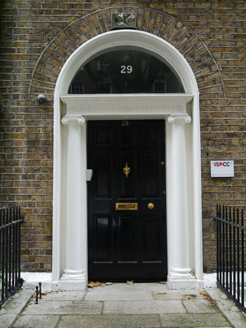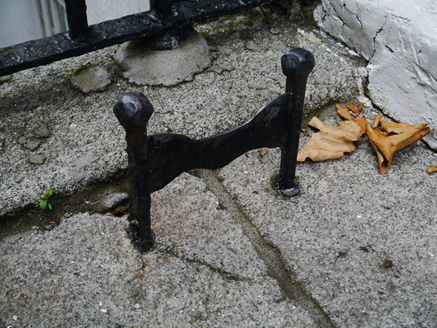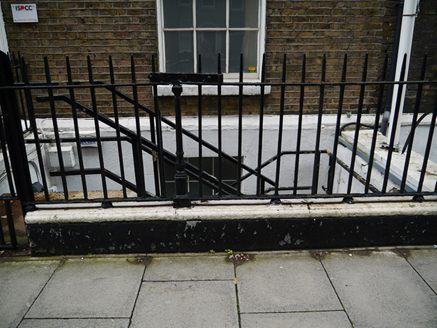Survey Data
Reg No
50100477
Rating
Regional
Categories of Special Interest
Architectural, Artistic
Original Use
House
In Use As
Office
Date
1790 - 1810
Coordinates
316594, 233316
Date Recorded
21/07/2016
Date Updated
--/--/--
Description
Attached two-bay four-storey former house over basement, built c. 1800 as one of pair with No. 30, having bowed eastern bays to rear, and two-storey return to rear. Now in office use. M-profile pitched slate roof, behind brick parapet with granite coping, having dormer window to south slope of rear roof. Shouldered rendered chimneystacks to east, and brick to west, with lipped terracotta pots. Parapet gutters and shared replacement uPVC and cast-iron downpipes. Flemish bond brown brick walling over painted ruled-and-lined rendered basement walling. Square-headed window openings, diminishing in height to upper floors, with patent reveals, granite sills and brick voussoirs. Timber sliding sash windows, three-over-three pane to top floor and six-over-six pane elsewhere; apparently timber sash windows to rear. Round-headed painted masonry doorcase with Ionic columns, moulded surround, entablature with fluted frieze and rosettes, plain fanlight and nine-panel replacement timber door with brass furniture. Granite entrance platform with cast-iron boot-scrape and two steps to street level. Basement area enclosed by wrought-iron railings with decorative cast-iron posts on painted moulded granite plinth, with steel steps to basement. Rear plot fronts onto Little Fitzwilliam Place.
Appraisal
No. 29 Baggot Street Lower is sited within a fairly unified late Georgian terrace lining the north side of the street. It is a well-preserved house, built around the turn of the nineteenth century. The house retains the well-balanced proportions and graded fenestration pattern typical of the period, and is enriched with a neo-Classical doorcase and fanlight that provide a visual focal point to the modestly ornamented exterior. The retention of timber sash windows and the intact setting to the front enhance this building. Despite some loss of original detailing, No. 29 is relatively well retained, forming part of this principal Georgian streetscape and contributing to the historic core of south central Dublin. The development of this street was planned in the late 1780s and approved by the Wide Streets Commissioners in 1791. Characterized by rhythmic proportions and graded fenestration, the austere and relatively modest facades of this row are aggrandized by the width of the tree-lined street, as the building line steps back considerably from No. 18 to the west, expanding to a breadth of 30m (100ft).
